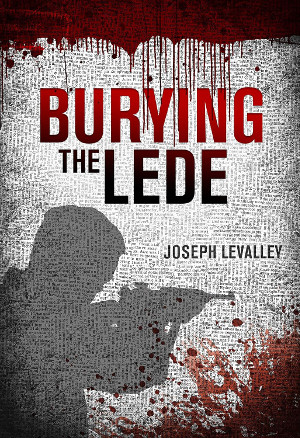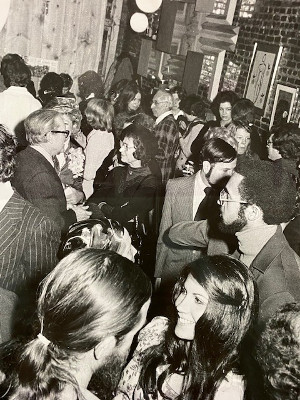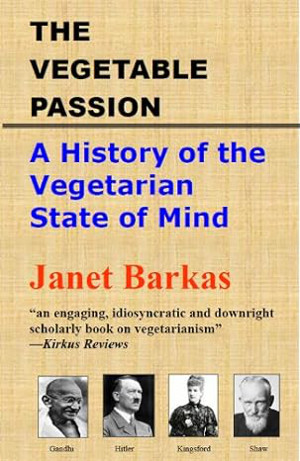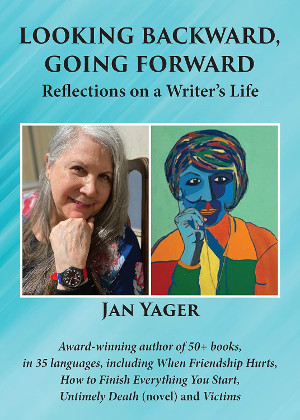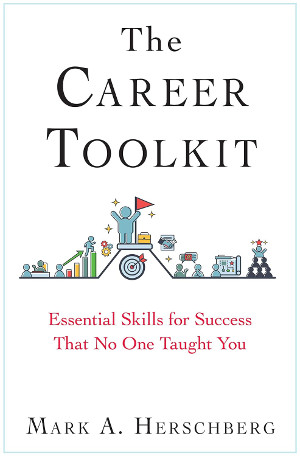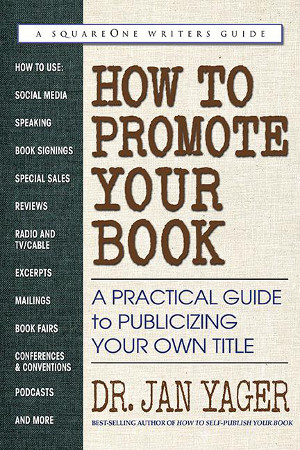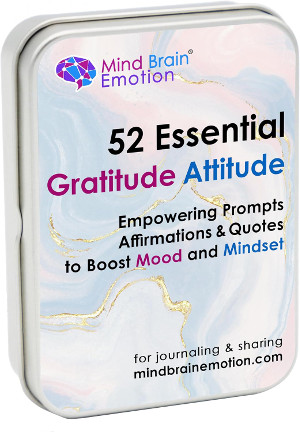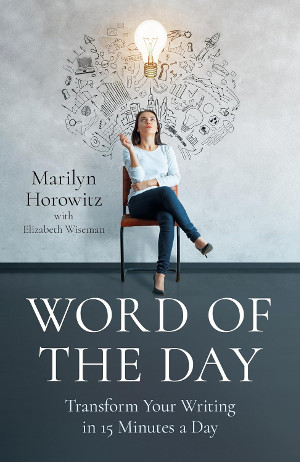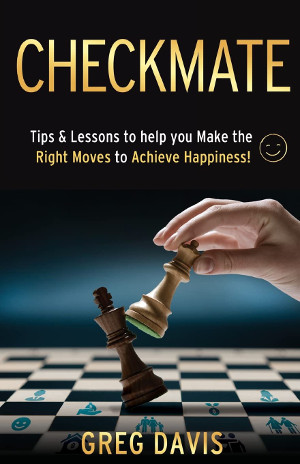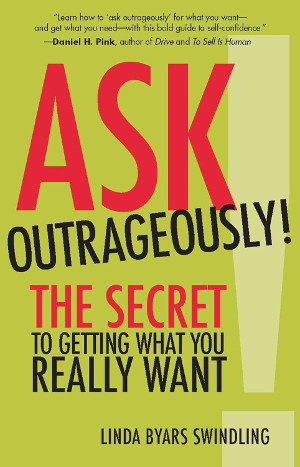The Power of Word-of-Mouth Marketing – and 20 Ways to Achieve It!
by
Jan Yager, Ph.D.
Author, Sociologist/Victimologist, and Founder/CEO of Hannacroix Creek Books, inc.
It was a year after the publication of my book Friendshifts by my own independent press, Hannacroix Creek Books, Inc., when my best friend Joyce told me something that made my day. Her daughter was in church, and the Reverend gave a sermon on “Friendshifts.” He shared that he was inspired by the concept in a book he had read with that title. That’s an example of word- of-mouth (W-O-M) marketing.
It could be defined as marketing that happens when someone, even you, is getting the word out about you, your book, or whatever it is you’re trying to promote. It usually works best if that someone is not you or even related to you—and not your mother or someone you hired to do your book promotion. The fact that it’s a stranger is what makes W-O-M so strong, powerful, and effective. It’s what’s known in the trade as a third-party endorsement. Someone separate from you is praising your book and they’re not even getting paid to do it! Yes, it’s promotion, but it’s often even unsolicited, and that’s what makes it more convincing!
Here’s another example of W-O-M marketing: Romance author EA Hunt has an aunt who was living in Detroit at the time. As Hunt explains: “My aunt was speaking with a coworker about books and the coworker told her that one of her favorite romance authors was EA Hunt, and one of her favorite books by EA Hunt was Hiding a Wolfe. My aunt chuckled and said, ‘I like her too.’ Her coworker then added that she’d been told by a friend to read one of my earlier books and fell in love with my writing!”
Consider your own purchasing, reading, or even viewing habits. How often do you seek out a book to read or even a movie or streaming show to watch, because someone tells you that he or she really liked it!
That Reverend giving a sermon about Friendshifts, or the coworker of EA Hunt’s aunt recommending her books, are just some of W-O-M moments that we all dream of. When it happens, we are excited and energized because Word-of-Mouth reaffirms that we have written a book worth talking about and, whatever we’re doing to promote our book, it is working!
Here are 20 ways with additional examples of how fiction and nonfiction authors (and their publishers) are achieving W-O-M:
1. W-O-M begins with you. Iowa-based Joseph LeValley is a musician and author of Burying the Lede, and four other novels in his Tony Harrington series. “In my experience, all good book marketing is based on word-of-mouth,” says Joseph. “I’ve spent almost nothing on advertising, and in the past four years have sold books in every state of the U.S. and in seven foreign countries. An author should not – cannot – be shy about instigating word-of-mouth about your books. One recent example, I was in New York City for a conference of authors, agents, and publishers. While in the city, I kept a pocket full of bookmarks promoting my books, and I gave one to anyone interested. Also, whenever I had to stand in line —waiting for a table, or the theater, or whatever— I chatted with the people around me. If the conversation allowed, I talked about being an author and handed out bookmarks. In the weeks following my New York trip, I sold books from New York to California, and as far away as Vienna, Austria! My advice to writers: word-of-mouth starts with you.”
2. Get endorsements. The bigger the name, the better. First-time novelist Liv Arnold went to the websites of bestselling novelists and asked if they would read her novel and provide a quote. She was pleasantly surprised by the positive reception she received. Although some were too busy, but at least three provided advance blurbs. Here is the blurb provided to Liv by Meredith Wild, a New York Times bestselling author: “In Stepping Stone, Arnold brings her readers on a journey of love, suspense, sexual awakening, and healing. This story pulls on the heartstrings while tackling important social issues.”
3. Get your book to bloggers. Bloggers are a wonderful way for authors to get exposure to book lovers in your genre. You may have your favorite book bloggers but if you need a starting point, here is a free list: https://bookreviewdirectory.com/book-blogger-list/ The website where the list is housed notes that it does not endorse anyone on the list and those who use the list have to do their own vetting since changes may occur overnight.
4. Have an in-person or Internet book party. My very first book party for my two nonfiction books on vegetarianism, The Vegetable Passion, published by Scribner, and Meatless Cooking, Celebrity Style, published simultaneously by Grove Press, was held at Sweet Basil Restaurant in Manhattan’s Greenwich Village. It was written up in The New Yorker’s “Talk of the Town.” Talk about beginner’s luck! You may read more about that party and how it came about in my memoir, Looking Backward, Going Forward: Reflections on a Writer’s Life.
In February 2023, I did a Zoom online publication party for Looking Backward, Going Forward memoir as well as my Square One title, How to Promote Your Book. Although I have always found in-person book parties a lot more effective in generating W-O-M, those type of events do take a lot of effort, and often even cost if you need to rent a space and pay for the food or refreshments. Hosting a book publication launch via Zoom or another videoconferencing platform may be a free or lower-cost/time investment option for you and your book that works.
5. Add a video about yourself or your book to Instagram, Facebook, LinkedIn, or other social media websites. You can post a video on Instagram to get people talking about your book. You can also post one on TikTok which is quite controversial as a social media tool these days, so you must decide if you want to use TikTok. You may also become aware that readers create and post videos about your book on YouTube or at Amazon. If those videos are something you think will help with your book’s W-O-M, you can share the link on your social media or in e-mails you send out.
6. Give away free books. Hong Kong-based Robert Kienzle gives away books as part of his company’s overall promotion strategy. Robert explains: “Our small business makes most of its money from clients, not from publications. My Hybrid Live Guide book was the third book we released for free. Our strategy is getting our books into the hands of people who need them: meeting leaders, other facilitators and consultants, and educators. If someone likes our material, we are available to create and run tailored workshops for their managers and employees. I also present at regional and international conferences around the world and am constantly giving out our free download link.”
7. Expand your book to other formats like an audiobook, e-book, or app. Try, if possible, to have your book in all three formats – audiobook, e-book, or print – since readers (and listeners) often have their preferred way of having the content delivered. Turning a book into an app is another way of generating more options for W-O-M. Mark A. Herschberg, author of The Career Toolkit, created a companion app, the Career toolkit app, available through Apple, to help his readers to remember what they learned in his book. “This helped people retain what they read and gave them a daily reminder,” says Mark.
8. Partner with a business. Elease A. Wiggins, whose book is A Farewell to Welfare: 25 Strategies to Freedom, Independence & Prosperity, partnered with a major furniture store, to host an adult book bag drive where they gave out book bags filled with supplies for low-income adult students who were studying for their GED. She also held a combination book launch and birthday party for family and close friends. Other activities have included working with local libraries in New York and New Jersey as well as colleges, women’s groups, and community organizations to create in-person or virtual book clubs. “Those W-O-M strategies helped to grow my fan base,” notes Elease.
9. Work the Internet through e-mail and social media, such as X (formerly Twitter), LinkedIn, and Facebook. Post regularly and often. Go out of your way to share useful information so it is more likely that your posts or status updates will be retweeted or reposted. Avoid only focusing on yourself or your book. Share news, links to articles about you or by you, but also provide interesting information not directly about you, your book, or that you authored! It is also important to respond to the posts that others share especially if it is a post that is related to your area of expertise. You can additionally post when something gets to you emotionally if you feel comfortable sharing in that way. The more those you connect to on social media care about you, and you show an interest in them, the more likely they are to care about —and share about —your book.
10. Pitch TV/cable, radio/podcasts, and journalists for interviews or features. Use the free newsletters and services that offer book authors a chance to respond to pitches that fit your area of expertise or something about your fiction or even your children’s book that everyone can all relate to. HARO (Help a Reporter Out), is now part of Connectively, which is part of Cision. (https://www.connectively.us) Sign up for posting, or responding to, pitches. Romance novelist Jeannie Lin shares about the longevity of her debut novel, Butterfly Swords, which she credits to W-O-M. Notes Jeannie: ”Butterfly Swords was published in 2011 by Harlequin Historical…Yet more than ten years later, Butterfly Swords keeps getting mentions on various lists and recommendations.” Since Jeannie contacted me about researching an article on W-O-M through my HARO query, it is obvious that she still puts in the time and effort into potentially cultivating the PR that can lead to W-O-M, more than a decade after her book’s initial release.
Other free outlets for responding to pitches include Qwoted.com. They also have a premium paid version with certain benefits unavailable to free subscribers. Check out their website for details Others include: Pitchrate.com (created by Wasabi Publicity, Inc.), and Profnet (which is also part of Cision, https://profnet.prnewswire.com).
11. Don’t forget about your backlist (previously published titles). Even though some may see a new book as “old” after just three to six months post-publication, authors need to keep generating W-O-M indefinitely. (Of course, you also have to consider your time management concerns between promoting the old and working on the creation and completion of the new!) But the longevity that W-O-M can lead to is notable. For example, Alina Adams, who has also worked as a Creative Content Producer for several soap operas, has a romance novel, The Fictitious Marquis, which is still finding an audience after more than twenty-nine years. After she got the rights back to the novel from Avon, which published the book back in 1995, Alina re-released it in both print and e-book and “went about promoting it by word out mouth.” She focused on Jewish sites because of the heroine and the themes. Alina adds, “And then it took on a life of its own, being picked up in other Jewish publications.”
12. Find resources that may help generate W-O-M and follow-up. There is an extensive Resource Guide in my book, How to Promote Your Book: A Practice Guide to Publicizing Your Own Title (Square One Publishers, 2023) Check it out for where to send your press releases, pitches, or review copies. If you have friends or colleagues who are also authors, you might ask them to share about any publicity experiences they recently had that you might pursue as well.
13. Donate part of your proceeds to a nonprofit. Kathyrn Starke, whose romance novel is entitled The Perfect Blend, donate profits of the proceeds to the American Heart Association. As she explains, “Thanks to some incredible partnerships, the book was on display in coffee shops, gift shops, and hotels with postcards that allowed the owners and patrons to talk about how to spread the love with just that one title. I had readers contact me that they purchased the book, shared a personal story about heart disease, and posted lovely reviews.”
14. Cultivate reader reviews. If someone sends you an e-mail praising your book, cut and paste part of that email into a reply and ask if he or she would post it as a reader review. Most of the time, they will gladly do that, especially since the hard part of writing a reader review – writing it – is behind them and done in such a natural way! Reader reviews are one of the most obvious ways to generate W-O-M because it is considered an opinion that is not from a source with a vested interest like the book publisher, author, or publicist. Jessica James has 684 Reader Reviews (Ratings) for her novel Lacewood on Amazon.com. She did a blog tour when the book was released, and she wrote notes that helped to get the word out. However, she confides, “I don’t think it was ‘one big thing’ that helped get attention for Lacewood, but a thousand little things.”
Other places where reader reviews can make a difference in generating W-O-M include Goodreads Reviews (which is owned by Amazon). Getting unsolicited positive reviews on LinkedIn can lead to W-O-M. Ditto for Facebook and all the other social media (Facebook, X, Instagram).
15. Create or attend author events. Get on panels for conferences in your genre that attract fans and even the media and make sure you “work the crowd.” Go to local, statewide, national, and international events, as time and budgeting allows. Becoming a guest speaker or workshop leader is usually an excellent way to get your name and book’s title shared among the hundreds and even thousands of attendees. When you attend or exhibit, make sure you interact and connect with those you meet. Creating author events can be a big boost to your W-O-M since it offers the potential of interacting with attendees especially if it is a half-day, all-day, or multi-day event.
16. Do a TED or TEDxTalk. You might not get paid, but you can spread your name, reputation, and the title of one or more of your books to potential readers and the media throughout the U.S. and globally. One of the many authors with TED or TEDx talks is author Nicole Shir who has a 13-minute TedX Talk, which is an independently organized TED event. Amy Tan, author of The Joy Luck Club, has many TED talks including the April 2008, “Where Does Creativity Hide?” which currently has more than 450,000 views. Book authors can generate tens of thousands or even millions of views of a TED Talk. There are several services offering paid help in this area if you feel having coaching about how to land a TED Talk is something you need to do. Check out any of the TED Talk coaches that you find through a Google search by visiting their website. If they offer a complimentary initial call or webinar, you can decide if this is an option that you need to consider.
17. Develop additional materials for your book like an online course or webinar. Another way to develop W-O-M is by posting a webinar or online course at your own website or you can cerate and you’re your online course through sites like Udemy, Kajabi, Skillshare, and Mighty Networks.
18. Be visible through LinkedIn and/or a website that you keep updating. Sharing interesting information, including occasional updates about your book on LinkedIn, can lead to others wanting to pursue your book. Remember that whenever someone shares a comment related to what you have written that is part of W-O-M. (Just one of the many W-O-M examples on LinkedIn for my book, How to Finish Everything You Start, is the article that CA Sumegha Mehta Borar wrote and posted on LinkedIn entitled, “Unveiling the Art of Completion: Insights from Jan Yager’s ‘How to Finish Everything You Start.” Of course I thanked her for that article.
If someone on LinkedIn indicates that he/she has not read your book already, but he or she shares a comment that indicates he or she might become an advocate for you and your book, you might want to connect to him or her, and/or even consider sending a complimentary copy of your book.
It may seem like an old-fashioned suggestion, but having a dedicated author website is still an effective W-O-M marketing tool. You can decide if you link your books to a specific retail sales option or share general information about where your book is sold. The bare minimum that your site needs is a page about you, a picture of your book and information about it, and a Contact us form that could also be used by the media. Be careful about posting about upcoming events unless you plan to regularly update your site so you do not have an event from several years ago still featured on your site’s home page as an upcoming event, dating your site. (You could, of course, have a section of your site where you archive photographs and descriptions of previous events.)
18. Use promotional items like a book trailer or a t-shirt to generate W-O-M. Romance novelist Jessica James did a book trailer for her historical romance, Lacewood. Sophia Demas’ husband wears a t-shirt with a picture on the cover of her book, The Divine Language of Coincidence, prominently displayed on the front and the back.
19. Write articles that you post or that get published, or make yourself available to have articles written about you.

Although Jenny Woo sells card decks that she created out of the research in her Ph.D. dissertation, rather than a book, I learned about Woo and her successful card deck business by reading Meg Sauer’s article in February 2024 at the CNBC site about her entitled “42-year-old spent $1,000 to launch for amazon side hustle —now it brings in $33,000 a week.” Woo’s company is Mind Brain® Parenting (mindbrainparenting.org).
One of her eleven card decks is “52 Essential Conversations.” Woo has a YouTube video related to her card deck business. There are also additional articles about her in Entrepreneur.com, Yahoo Finance, Forbes, business Insider, and many others.
Having others write about you is the essence of W-O-M. But until that happens, or in addition to those interviews or features, you can yourself blog or write articles that you post at your website, in Medium, Substack, Patreon, or you can get assignments for paid or free contributions that others post on their sites or that are printed in their publications. Check out “Jan’s Blog” at my own website for an example of how blogging can help generate word-of-mouth marketing: https://www.drjanyager.com/jans-blog/
So, whether you are trying to get the word out about your current book, your next book, or your backlist previously published titles, generating that spontaneous W-O-M (Word of Mouth) does take time, effort, and, planning. However, the rewards, will hopefully justify the effort you put into generating W-O-M marketing going so, hopefully, your positive author reputation and your book sales keep increasing!
Now I will share a couple of my own W-O-Ms. In the monthly writer networking group I belong to, author Marilyn Horowitz shared about her new book, Word of the Day, written with Elizabeth /wiseman. What she said was so interesting that it made me want to get her book and read it! (My word of the day related to this article would be: W-O-M, or word-of-mouth.)
Another book I want to share a W-O-M about is Checkmate by Greg Davis. The subtitle, Tips & Lessons to Help You Make the right Moves to Achieve Happiness! says so much! I predict you’re also going to enjoy reading Chapter 1, “Cherish Family Time!” which is such a key concept for attaining happiness especially for those, like me, who were raised by two loving parents who unfortunately were also workaholics! Chapter 12 is another of the many gifts to readers in Greg’s book: “How to Achieve Happiness.”
Finally, my last W-O-M share is for Linda Swindling’s book Ask Outrageously! What a great title and a powerful concept! My favorite personal “ask outrageously” example is when I proposed to Fred, my future husband, just a week after we met thirty-nine years ago. Fred responded that he needed more time. I figured he meant weeks, months, or even years! But instead, I was pleasantly surprised when just a week later, he proposed to me, and the rest, as they say, is history!
What might you Ask Outrageously! about? What’s stopping you? Read Linda’s book to find out about those stops, and ways to cures for it! Or, as her subtitle puts it, find out The Secret to Getting What You Really Want.
You see how powerful W-O-M can be? I hope so!
Jan Yager, Ph.D., (the former J.L. Barkas) is a book coach, sociologist/victimologist, adjunct associate professor, publisher, and an award-winning author of 60+ nonfiction and fiction titles, translated into 35 languages, including How to Promote Your Book; How to Self-Publish Your Book; Looking Backward, Going Forward: A Reflections on a Writer’s Life; How to Finish Everything You Start; Celebrating Friends and Friendship; 125 Ways to Meet the Love of Your Life; the novels The Pretty One and On the Run; and many other titles.
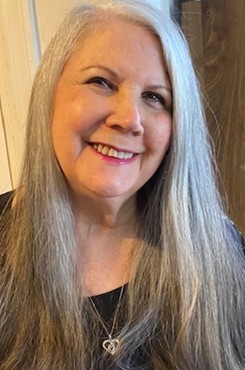
In 1996, Jan founded Hannacroix Creek Books, Inc., an independent press that publishes adult fiction and nonfiction, YA and middle grade fiction, illustrated children’s books, and specialty books including journals and workbooks. For more on the company, visit: https://www.hannacroixcreekbooks.com.
For more on Jan, go to: https://www.drjanyager.com.
This blog is an edited and updated version of Jan’s article, “The Power of Word of Mouth,” that appeared in the February 2023 Romance Writers Report (RWN), a publication of the Romance Writers of America® Association (RWA). Copyright © 2024, 2023 by Jan Yager, Ph.D. Please note: You may generously share and/or repost the URL or link for this article, but you need written permission in writing from the copyright owner to republish it.
Disclaimer: As an Amazon Associate, we earn from qualifying purchases for books with links in this article.

